Design Postcard: The house with the $600m art collection
The son of a family of bookbinders grew up to amass a private art gallery, described as one of the best in Europe, that includes Modigliani and Renoir, Magritte, Bacon and Rembrandt.
Visiting the Cerruti Collection is discombobulating from the start. A few miles west of Turin, the house, which its former owner described as “provençal”, is a stark concrete building (a far cry from the sun-kissed pinks and yellows one would normally associate with the south of France). A tower rises above the arches and a dour security guard escorts you along the path to the door. Stopping to admire the view from the hilltop is greeted with a frown, an audible sigh and a distinct quickening of pace.
Inside, in a plain reception room with a grey carpet, surrounded by wary staff, you are instructed to don bright blue plastic shoe covers and put your bag, including phone, into a locker for the duration of the visit. Only then are you allowed to proceed to the first room; the library. And suddenly everything changes.
We had chosen to visit with friends who had come from London for the weekend. Since they are lovers of mid-century and modernism, we had assumed from the building that it would be full of modern art and furnishings which would appeal to their tastes.
But inside we found more than 300 works by artists including Francis Bacon and Georges Bracques, Goya and Giacometti, Magritte, Modigliani and Miro, Klee and Kandinsky, De Chirico, Egon Schiele and Warhol.
There are so many paintings crammed onto the walls that smiling security guards (very different to the ones that patrol the garden) occasionally have to remind you to look behind each door or to peer up at the ceiling where a Picasso has been crammed into the last remaining corner and to pause on the stairs even though, by this stage, you may be becoming slightly blasé, given the sheer volume of works.
“Another Magritte. Fancy that”, you murmur as you head to the next room. “Oh did I miss that Picasso? I’ve already seen four,” you sigh as you stroll along the corridor. “Of course it’s a rare Warhol, what else would it be?” you mutter in tones of rising hysteria.
It’s an extraordinary, head-spinning art experience, set in an opulent rococo interior that is completely at odds with the cool concrete render of the exterior. And that juxtaposition sums up the man who created this collection.
During the week Federico Cerruti, who lived in such an unassuming apartment near his office that colleagues nicknamed him The Accountant, oversaw the family business, which had grown from a Turin bookbinder to the company that had the ultra-lucrative contract to print every telephone directory in Italy.
On Sundays he would head for this villa in the hills, where he would spend the day looking at his collection before returning to the city at dusk ready to start the working week. He slept at the house only once in his life.
When he died – not, as he planned, in the tower room at the top of the house, but in a hospital in Turin – few knew of the existence of his collection, apart from the few friends and family members who had been allowed to visit, usually on his January birthday and July Saint’s day.
It is undoubtedly the most incredible art collection I have ever seen in my life, but it is the setting that makes it even more spectacular. We are used to standing behind alarmed barriers in museums or peering through crowds in hushed reverence. It’s akin to going to church.
But here the works of art have been hung to decorate the rooms of a home; in rooms that were made for dining, relaxing and reading. The bedrooms, while no-one really slept in them, have beds and linens and dressing tables.
You can imagine what it might be like to curl up and read a book in a comfy chair under the gaze of Rembrandt and Renoir, or to sleep watched over by pictures created by some of the greatest artists the world has ever known.
And while the sheer size of the collection will take your breath away, how much more thrilling to see these incredible paintings used as decor rather than displayed in a series of empty spaces with no sense of the person who acquired them over a lifetime – “bought” seems too transactional a word.
You can visit the Cerruti Collection as part of a trip to the Castello di Rivoli (Italy’s first contemporary art collection). They give you a very cool tote bag as part of the ticket purchase. It’s only open at the weekend and most of the tours are guided, but on the first Saturday of every month you can wander round at your own pace.
It is, as they say, a hard recommend.





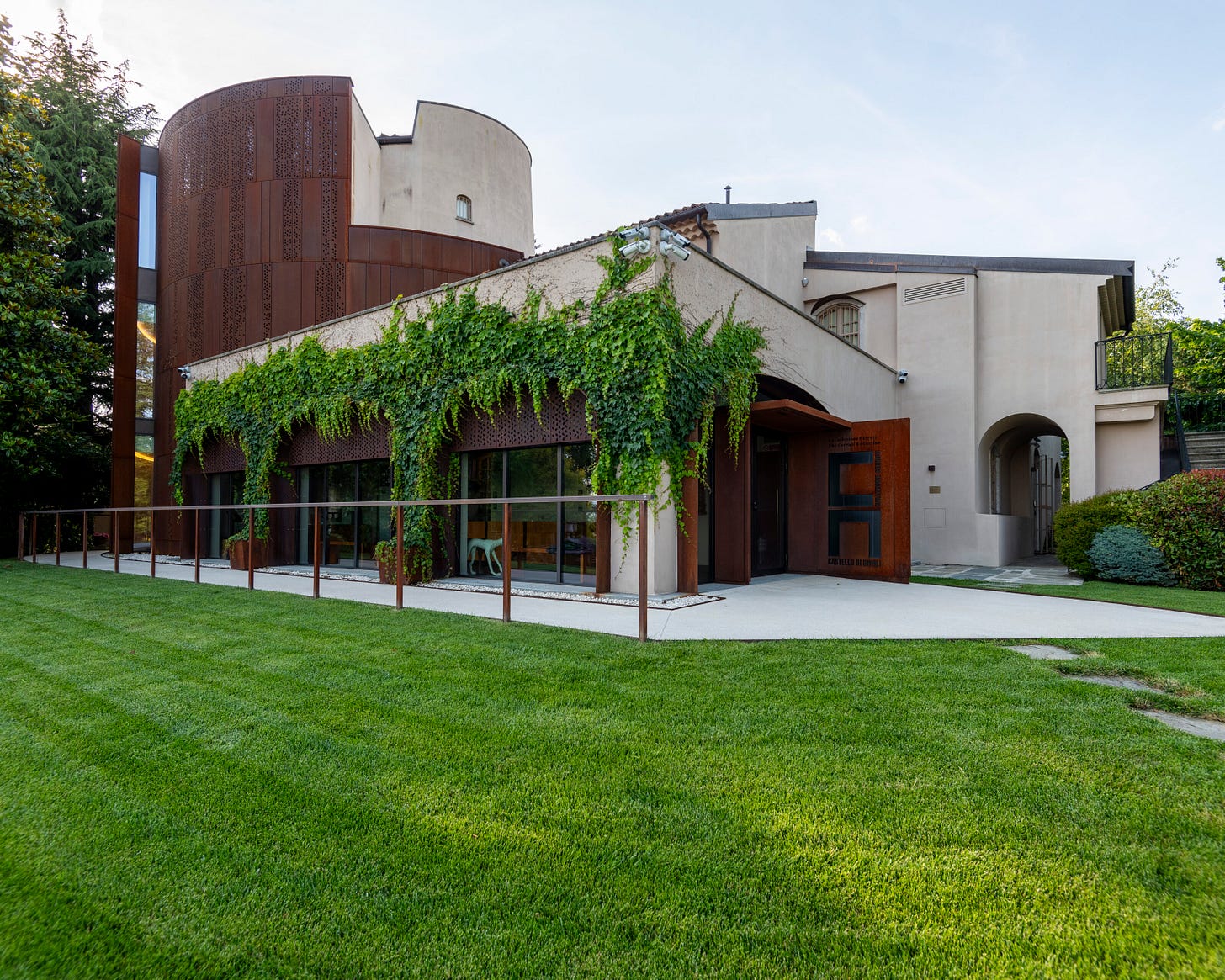
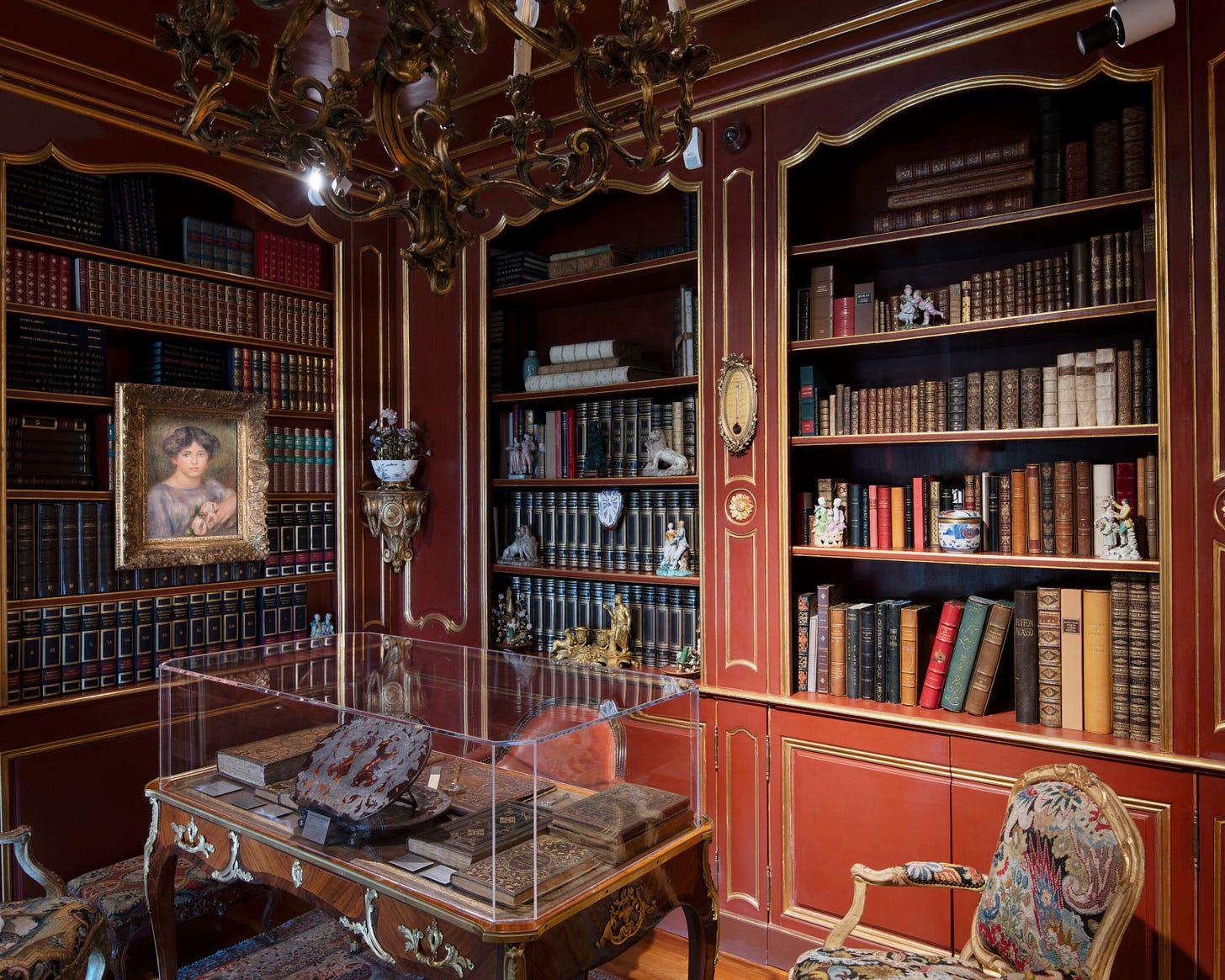
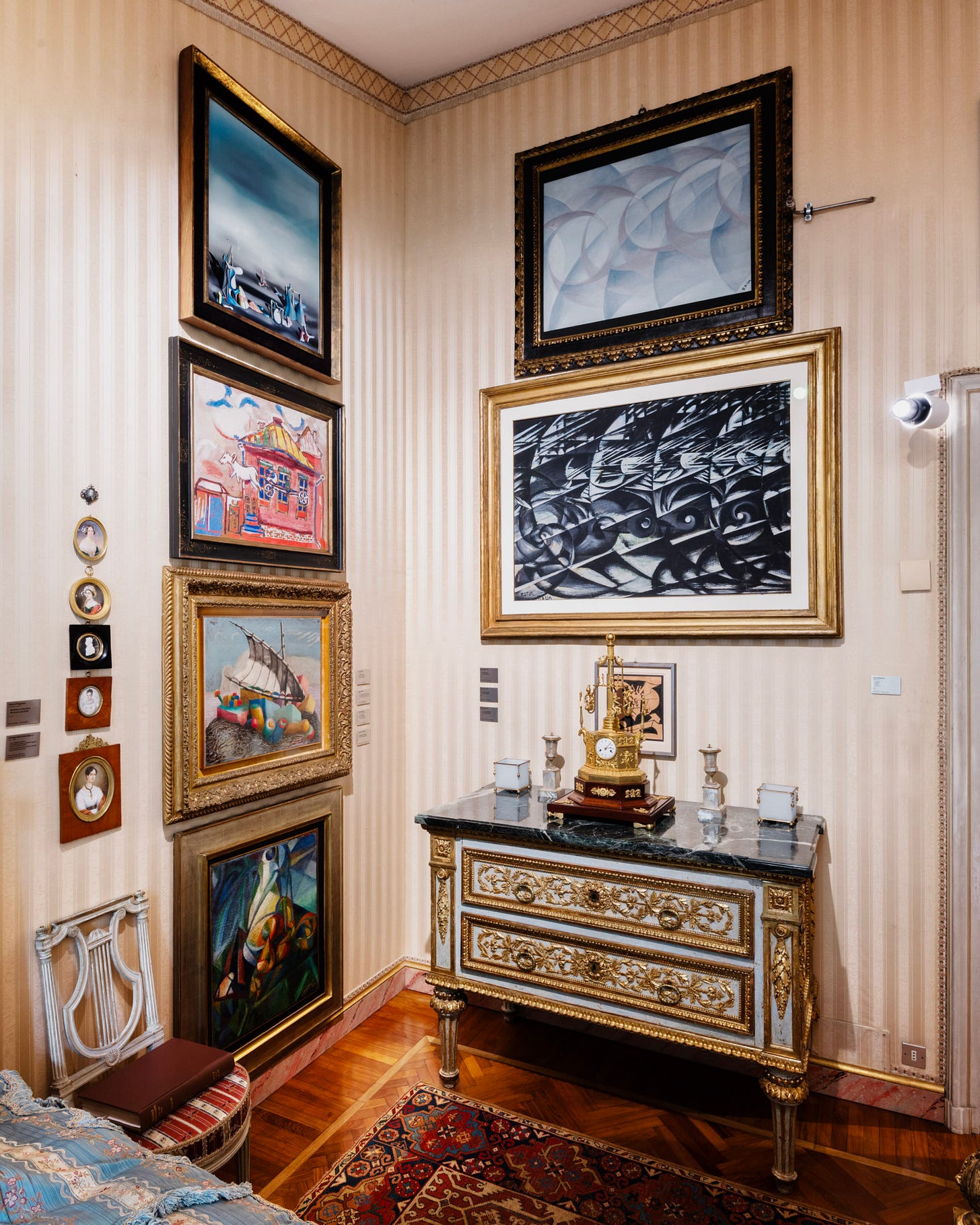
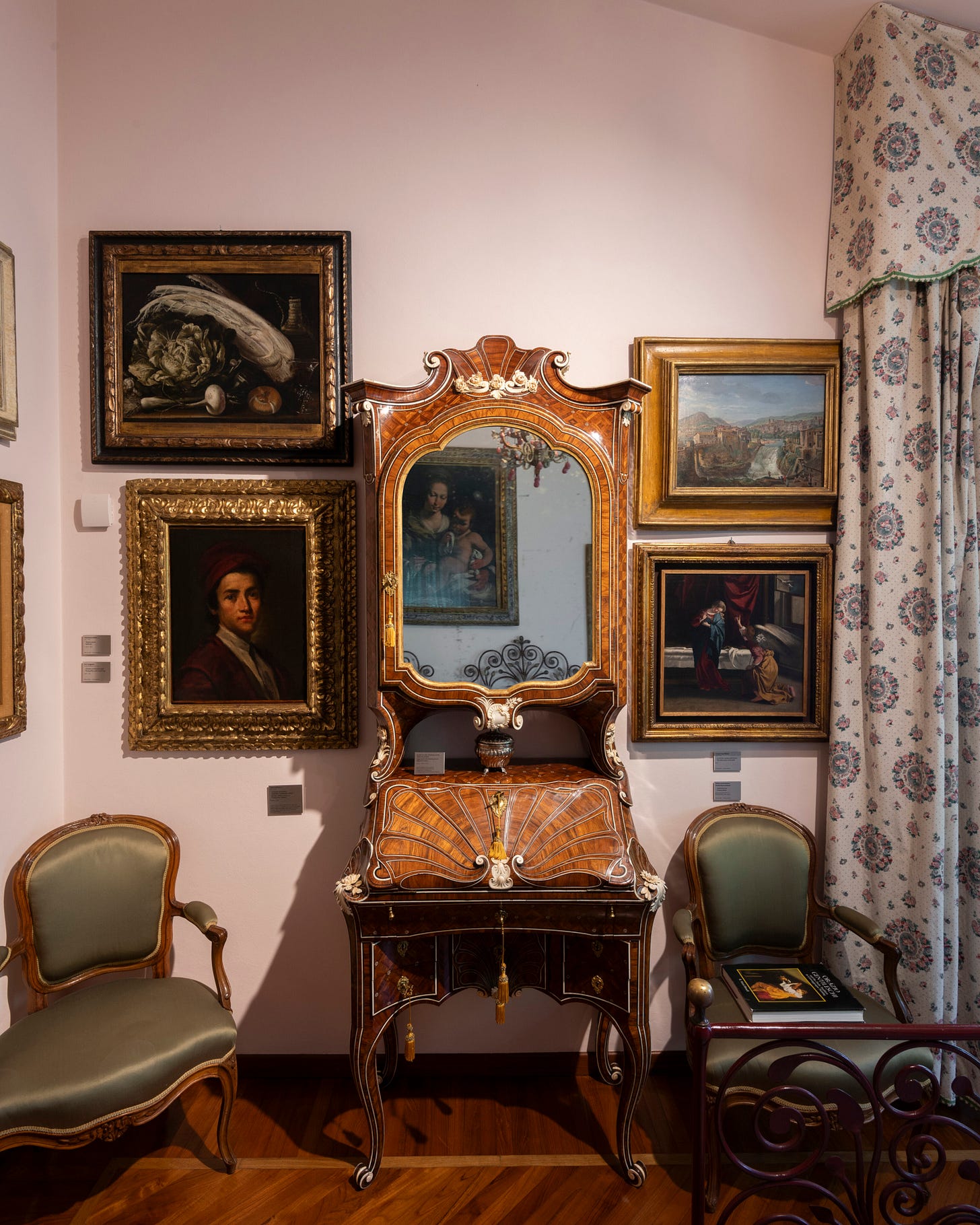

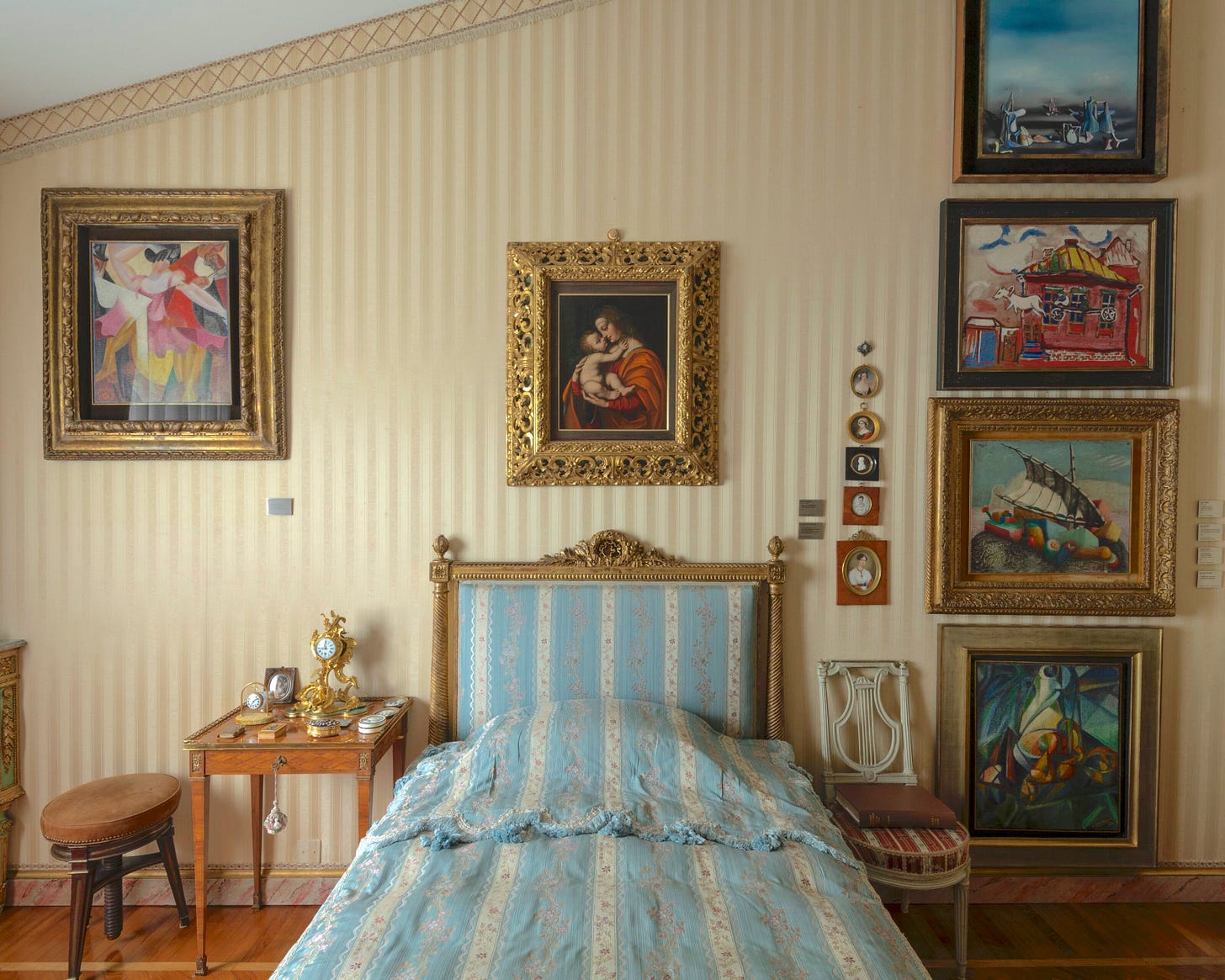
The way they hung the artwork is really good. I love asymmetrical hanging.
Amazing - thank you for sharing - added to our Italian trip planner for next year!